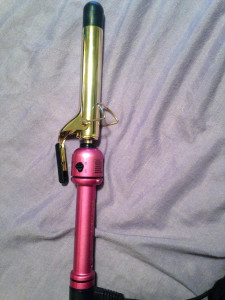In elementary school, I was taught that the first Thanksgiving was a celebration of the pilgrims arrival to America on the Mayflower. It was a time to be thankful for the things I had. My elementary school mind usually thought things like “I am thankful for candy, Santa, and my parents.” Typically, we had a classroom feast of some sort. We each shared with the class something we were thankful for, and dressed in pilgrim-like or Native American clothing for a day. We made pictures and crafts, turkeys being the most common theme. One activity in particular I remember was tracing my hand on a piece of paper and making the tracing into a turkey. Popcorn was also a big part of my Thanksgiving celebrations during elementary school. To my knowledge, the Natives and pilgrims were the best of friends; no one in the colony died or got sick or suffered from cold or starvation. Mashed potatoes, gravy, stuffing, cranberry sauce, rolls, butter, corn, and of course turkey were what I assumed to be the main dishes at the pilgrim’s feast, since that is what was served at ours. The main message I got about Thanksgiving was that it was a celebration of the pilgrims’ arrival, and a day to be thankful for my family.
Prownian Analysis
Step 1: Description
This object has a gold, shiny barrel and a pink handle. There is a black protector on the end of the barrel. There is a dial to adjust the temperature of the object. It has a long black cord to power it, and a gold stand that balances it upright.
Step 2: Deduction
To use this object, hair is wrapped around the barrel after it has been plugged into power and heated. This object is used to enhance the natural curl of hair. It is used primarily by women and people with long hair.
Step 3: Speculation
The object is likely used by someone interested in hair and beauty trends.
Does the object represent current beauty trends? Is this object safe for anyone to use? Does the temperature chosen dictate the effectiveness of this object? Does the object cause damage to hair?
Step 4: Research
Ruetsch, S. B., and Y. K. Kamath. “Effects of Thermal Treatments with a Curling Iron on Hair Fiber.” International Journal of Cosmetic Science 26, no. 4 (August 2004): 217. Http://web.b.ebscohost.com.libproxy.boisestate.edu/ehost/detail/detail?sid=68b41794-e591-44a7-934f-7310728d7813@sessionmgr120&vid=13&hid=110&bdata=JnNpdGU9ZWhvc3QtbGl2ZQ==#AN=13867416&db=aph.
In this article, the authors research the effects of applying heat regularly to the hair on a chemical level. It discusses how L-ascorbic acid protects and prevents the deformation of hair follicles. A potential for use in cosmetics and pharmaceutics was found. The study then investigates the relationship between damage and the amount of moisture in the hair. This article was not similar to Prown’s method; it lacked description, deduction, and some speculation.
Wendy Meszaros. “A Quick History Of The Curling Iron.” ABC Article Directory. April 13, 2010. Accessed January 23, 2016. http://www.abcarticledirectory.com/Article/A-Quick-History-Of-The-Curling-Iron/860730.
In this article, the author describes curling irons from their earliest forms to the most recent. It begins with the earliest Egyptian, Babylonian, German, Greek, and Assyrian methods or curling and altering hair. The first patented curling iron was born in 1866; four years later, air dryers and heated curling tongs were patented. The introduction of chemicals and heat methods, which due to unmanageable temperatures, were risky and often damaged hair, but began a new era of hair control. This article was similar to Prown’s. It contained parts of all five steps. 


The Golden Gate and Brooklyn Bridge
The Golden Gate bridge is a suspension bridge, and is the twelfth longest in the world. The bridge’s cables system is fairly simple; they run straight up and down. Although eye-pleasing, the “wow factor” of the bridge’s design lies more in its sheer size and length, and bright orange color, than in intricate or lavish details. Photography of the bridge tends to focus on its length and lighting system rather than up close details. It is an icon in the city of San Francisco, and has been declared one of the Wonders of the Modern World by the American Society of Civil Engineers, which is why this bridge continues to be upgraded and improved rather than replaced.
The Brooklyn Bridge, by contrast, is a cable-stayed/suspension bridge hybrid. It was the first steel-wired bridge of its kind, and has an intricate crossing wire design. The bridge also has two large towers from which the cables run to support the bridge deck. The bridge contains limestone, granite, and Rosendale cement and is neo-Gothic style, giving it a much more historic look than the Golden Gate bridge, with many more fine details. Photographs of this bridge showcase its wire system and detail on the pillars, rather than its overall size and appearance. This bridge, too, is iconic in New York City, and continues to be renovated rather than rebuilt in order to preserve this historic landmark (it was actually designated a National Historic Landmark in 1964).
I think that the Brooklyn Bridge gives us a peek into past architecture while still practicing new, innovative techniques, while the Golden Gate Bridge was a step toward a new, more modern look and era in architecture and engineering.
- « Previous Page
- 1
- …
- 3
- 4
- 5
- 6
- Next Page »